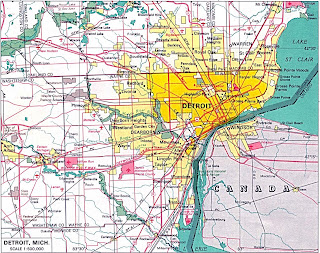Anyway, this professor, Dr. Draus gave me a paper he wrote about conceptualizing urban social problems in terms of disaster management. The name of that paper is "Substance Abuse and Slow Motion Disasters: The Case of Detroit." This concept of slow motion disasters is pretty new to me... thinking about disaster not in terms of an acute event but the pre-existing social conditions and societal structures which lead to the "chronic catastrophe" of poverty. And if we look at Detroit, we see the same social indicators which might constitute a "disaster."
Detroit’s disaster is entirely social in origins, and required no help from
nature to occur. It is diffuse, multi-faceted, and manifested in multiple
indicators. Detroit is a national leader in specific health conditions such as
rates of childhood asthma, blood lead levels and obesity, as well as in more
general social measures such as racial segregation, sprawl and urban-suburban
income gap, and in much-publicized indices of violence (Swanstrom, Casey, Flack
and Dreier 2004; Sui 2003; Boozer and Metzger 2006).
So then... where do the drugs come in? Apparantly a report by the DEA even attributes the "rise of the crack economy to the collapse of the city’s internal social structure, primarily the massive loss of jobs." So then we got into this whole other discussion about how we could consider Detroit in fact an incredibly resourceful and innovative city at this point. Really, no one predicted how much our industrial economy would collapse, and of course pretty much all of Detroit's economy was based on the now failing auto industry. So, out of nowhere, people in the city had to develop a new economy... and yes, the new economy may be reliant on drug activity, but it is something, and it is something that has kept the city from becoming completely abandoned.
So as a social worker... what can I do? And what do you all think about this drug economy? And can we really use disaster management approaches to address major social problems? You can drive down the street and see that Detroit is a disaster zone... but can our traditional approaches to disasters really change the social and structural situation? Tell me what you think. (Except you, Eric... because you already did :) )
Leah

